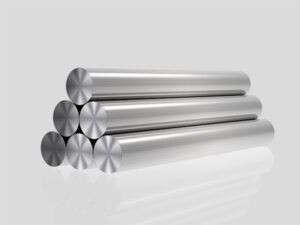Hot work tool steel is a versatile and valuable material in the world of precision machining. Its exceptional properties, including high heat resistance, toughness, and wear resistance, make it a preferred choice for manufacturing intricate and precise components. In this extensive article, we will explore the role of hot work tool steel in precision machining, delve into the key properties that make it ideal for this purpose, discuss machining techniques, and address common questions related to achieving precision in machining with hot work tool steel.
1. Introduction to Precision Machining with Hot Work Tool Steel
1.1 What is Precision Machining?
Precision machining is a manufacturing process that involves the removal of material from a workpiece to create intricate and highly accurate components. It plays a critical role in industries such as aerospace, automotive, medical devices, and electronics, where precision and tight tolerances are paramount.
1.2 Significance of Hot Work Tool Steel
Hot work tool steel’s significance in precision machining lies in its ability to maintain its properties under high temperatures and mechanical stress. This makes it an ideal choice for producing components with precision, especially when high-temperature applications are involved.
1.3 Precision Machining Applications
Precision machining with hot work tool steel finds applications in the production of aerospace components, injection molds for plastics, extrusion dies, forging dies, and various high-precision mechanical parts.
2. Key Properties of Hot Work Tool Steel for Machining
2.1 Heat Resistance
Hot work tool steel excels in withstanding high temperatures, ensuring that the material maintains its hardness and strength during machining processes involving elevated temperatures.
2.2 Toughness
The toughness of hot work tool steel prevents chipping and fracture during machining, contributing to the precision and reliability of the machining process.
2.3 Wear Resistance
Hot work tool steel’s excellent wear resistance ensures that cutting tools maintain their sharpness and durability during precision machining.
2.4 Dimensional Stability
Dimensional stability is crucial in precision machining, and hot work tool steel retains its shape and dimensions even under the thermal and mechanical stresses of machining.
2.5 Thermal Conductivity
Efficient thermal conductivity in hot work tool steel helps dissipate heat during machining, preventing localized overheating and ensuring consistent performance.
3. Machining Techniques for Hot Work Tool Steel
3.1 Turning and Milling
Turning and milling are common machining techniques for hot work tool steel. These processes involve removing material using rotating cutting tools and are suitable for achieving precision in various component geometries.
3.2 Drilling
Drilling hot work tool steel requires specialized drills and techniques due to the material’s toughness and heat resistance. Proper tool selection and cooling are essential for precision drilling.
3.3 Grinding
Grinding is often employed for ultra-precision machining of hot work tool steel. It allows for tight tolerances and excellent surface finishes, making it suitable for critical applications.
3.4 Electrical Discharge Machining (EDM)
EDM is a non-traditional machining method that uses electrical discharges to remove material. It is effective for intricate and complex shapes in hot work tool steel components.
4. Challenges and Solutions in Precision Machining
4.1 High-Temperature Considerations
Machining hot work tool steel generates significant heat, requiring effective cooling and lubrication to maintain precision and prevent tool wear.
4.2 Tool Wear
Hot work tool steel’s toughness can lead to tool wear, necessitating the use of high-quality cutting tools and appropriate tool coatings to extend tool life.
4.3 Surface Finish
Achieving the desired surface finish is crucial in precision machining. Hot work tool steel may require post-machining processes or fine-tuning to meet surface quality standards.
4.4 Machinability of Specific Hot Work Tool Steel Grades
Different hot work tool steel grades exhibit variations in machinability. Engineers and machinists must select the most suitable grade for the specific precision machining application.
5. Improving Precision with Hot Work Tool Steel
5.1 Advances in Materials
Continual research and development in hot work tool steel alloys lead to improved materials that offer enhanced machinability while maintaining the essential properties required for precision machining.
5.2 Cutting Tool Technology
Advancements in cutting tool technology, including carbide inserts and coatings, enhance the performance and tool life during precision machining with hot work tool steel.
5.3 Coolant and Lubrication
The selection of the right coolant and lubrication strategies is critical for achieving precision and controlling heat during machining processes with hot work tool steel.
6. FAQ: Addressing Common Questions
6.1 Can hot work tool steel be used for both rough and finish machining?
Hot work tool steel is versatile and can be used for both rough and finish machining, depending on the specific grade and application requirements.
6.2 What are the best practices for minimizing tool wear during hot work tool steel machining?
Minimizing tool wear involves using high-quality cutting tools, appropriate tool coatings, optimizing cutting speeds and feeds, and ensuring efficient cooling and lubrication.
6.3 How does hot work tool steel compare to other materials for precision machining?
Hot work tool steel offers a unique combination of properties, including high heat resistance, toughness, and wear resistance, making it a preferred choice for precision machining in high-temperature applications.
6.4 Are there any limitations in achieving ultra-precision machining with hot work tool steel?
Achieving ultra-precision machining with hot work tool steel may be challenging due to its toughness and heat resistance. However, with the right tools, techniques, and cooling strategies, high precision can still be achieved.
6.5 What industries benefit the most from precision machining with hot work tool steel?
Aerospace, automotive, medical devices, and electronics are among the industries that benefit significantly from precision machining with hot work tool steel due to the material’s ability to withstand high temperatures and maintain precision.

